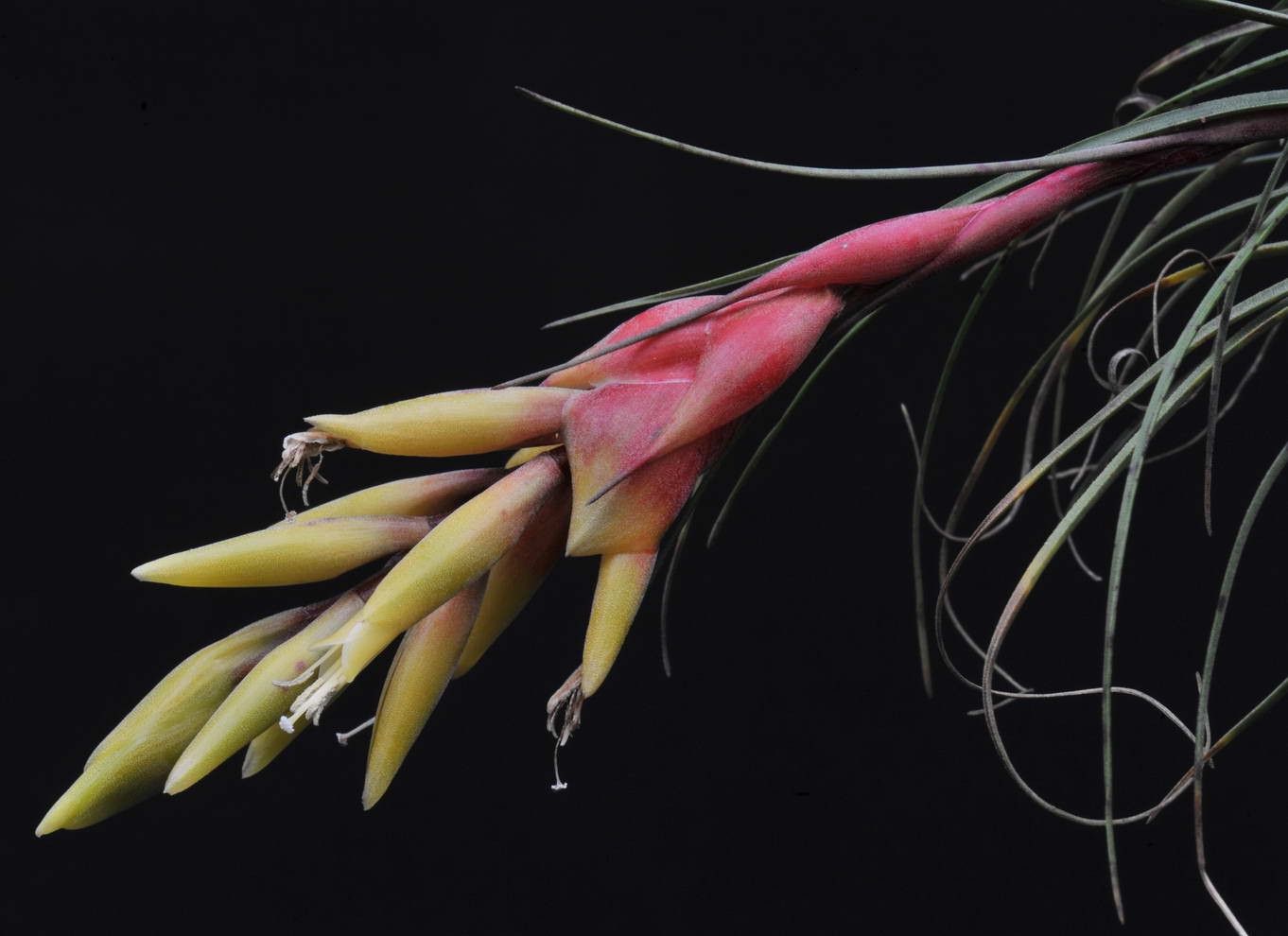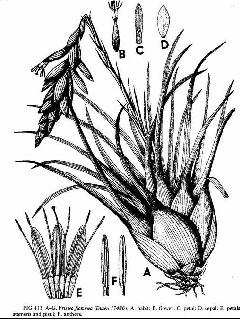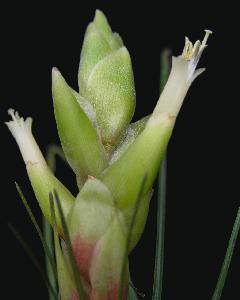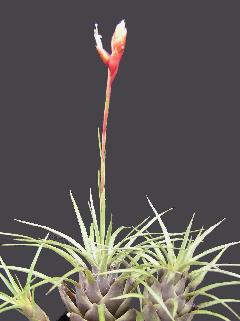

So in September 2005 I was surprised to receive a photo of a Vriesea poenulata with yellow petals from my friend Oscar Ribeiro in Rio de Janeiro. Alarm bells rang because this did not link with what I thought was V. poenulata. A quick reference to Smith & Downs showed petals as white so I refuted Oscar’s name. Oscar replied by saying that Elton Leme said petals should be yellow and had agreed with Oscar’s identification.
Not to be outdone, I checked with Harry Luther who confirmed the error of white petals in Smith & Downs which should show yellow. So I had to eat humble pie and removed the Aussie photos of the alleged V. poenulata (with white flowers) from www.fcbs.org and replaced them with Oscar’s. What we had as V. poenulata were really V. flammea! This broadened my view as to what could be a wide range in V. flammea.
What is interesting is that Baker in 1889 said petals were white, Mez in 1935 said petals were yellow, and Smith went back to white. The Holotype is a Morren drawing – note drawing not painting where colour may come into the equation!
If we look at Smith’s key we will see that we should really be looking at the scape bracts for the key difference and I ask you to look carefully at both drawings.
Subkey XI
Flowers in more than 2 ranks, polystichous. Inflorescence simple; stamens mostly exserted.
1. Inflorescence polystichous-flowered only at base, lax, elongate. Cuba (variety). platynema
1. Inflorescence wholly polystichous flowered. Go to 2.
2. Leaf-blades ligulate, acute, 4-5 cm wide. Mexico. malzinei
2. Leaf blades narrowly triangular, attenuate. Brazil. Go to 3
3. Scape-bracts all bearing recurved elongate blades; inflorescence dense, few flowered, 4-9 cm long. poenulata
3. Scape bracts bearing erect blades, those of the upper ones very short. Go to 4
4. Inflorescence dense except at base; flowers in about 4 ranks, mostly suberect; floral bracts inflated. flammea
4. Inflorescence lax; flowers in slightly more than 2 ranks, all divergent or spreading at anthesis; floral bracts closely enfolding the sepals. corcovadensis


With this knowledge stored away for future reference I was confronted in June 2007 with yet another plant called V. poenulata by Ken Woods which did look different to the previous Aussie V. poenulata I had seen. Here we must remember that V. flammea and V. poenulata are next to each other in Smith & Downs so they are very similar and we have to decide whether we take someone else’s word on identification. Colour of the floral bracts for V. flammea says red or the highest yellow and for V. poenulata says red or the upper pale green which is very similar taking into consideration differences in growing conditions.
I suggest you look at Vriesea flammea in the broad sense because I suggest that this species is common in Australia whereas V. poenulata is not.



